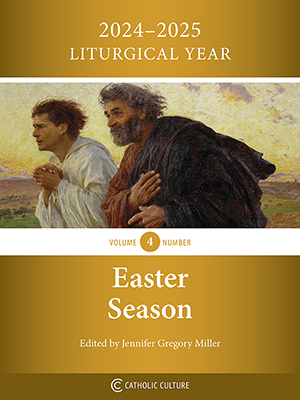USACV Statement on Ecclesiae Sponsae Imago
by United States Association of Consecrated Virgins
USACV STATEMENT ON ECCLESIAE SPONSAE IMAGO
The long-awaited Instruction on the Ordo Virginum is deeply disappointing in its denial of integral virginity as the essential and natural foundation of the vocation to consecrated virginity. In what appears to be an intentionally convoluted and confusing statement, number 88 of the document states: “Thus to have kept her body in perfect continence or to have practiced the virtue of chastity in an exemplary way, while of great importance with regard to the discernment, are not essential prerequisites in the absence of which admittance to consecration is not possible.”
It is shocking to hear from Mother Church that physical virginity may no longer be considered an essential prerequisite for consecration to a life of virginity. The entire tradition of the Church has firmly upheld that a woman must have received the gift of virginity – that is, both material and formal (physical and spiritual) – in order to receive the consecration of virgins. In the rite of consecration to a life of virginity, a woman is consecrated as “bride of Christ,” so that she might be “an eschatological image of the world to come and the heavenly Bride of Christ.” (from the Introduction to the Rite of Consecration to a Life of Virginity).
The prerequisites for consecration as stated in the Introduction to the Rite of Consecration to a Life of Virginity do not change with the issuance of this Instruction. A literal translation of the Latin in Criterion One states:
Those Women to Whom the Virginal Consecration May be Imparted: a) In the case of virgins leading lives in the world it is required that they have never celebrated marriage and that they have not publicly or manifestly lived in a state contrary to chastity.
Stretching from the time of the virgins of the early Church who lived out their vocations in the midst of a secular society, to the virgins of the second millennium whose consecrations were lived primarily as nuns in enclosure, and into the twentieth century with the re-opening of the vocation to women leading lives in a secular society, the Church has sought to guard the integrity of consecrated virginity and the uniquely virginal eschatological sign it represents.
In stating that the virgin seeking consecration must “have not publicly or manifestly lived in a state contrary to chastity,” the criterion is specifying that virginity is a minimum requirement for consecration. There are some egregious violations of chastity that, even if not strictly violating virginity, would disqualify a woman from receiving the consecration of virgins. The first admission criterion is meant to uphold the integrity of the vocation and to protect the woman who desires perpetual consecration as a virgin-bride of Jesus Christ.
“Among your many gifts you give to some the grace of virginity.” – from the Rite of Consecration to a Life of Virginity.
Judith M. Stegman, JCL, president USACV
Dr. Magalis Aguilera, Psy.D., vice-president USACV
Dr. Linda Ann Long, M.D., secretary USACV
This item 11911 digitally provided courtesy of CatholicCulture.org






